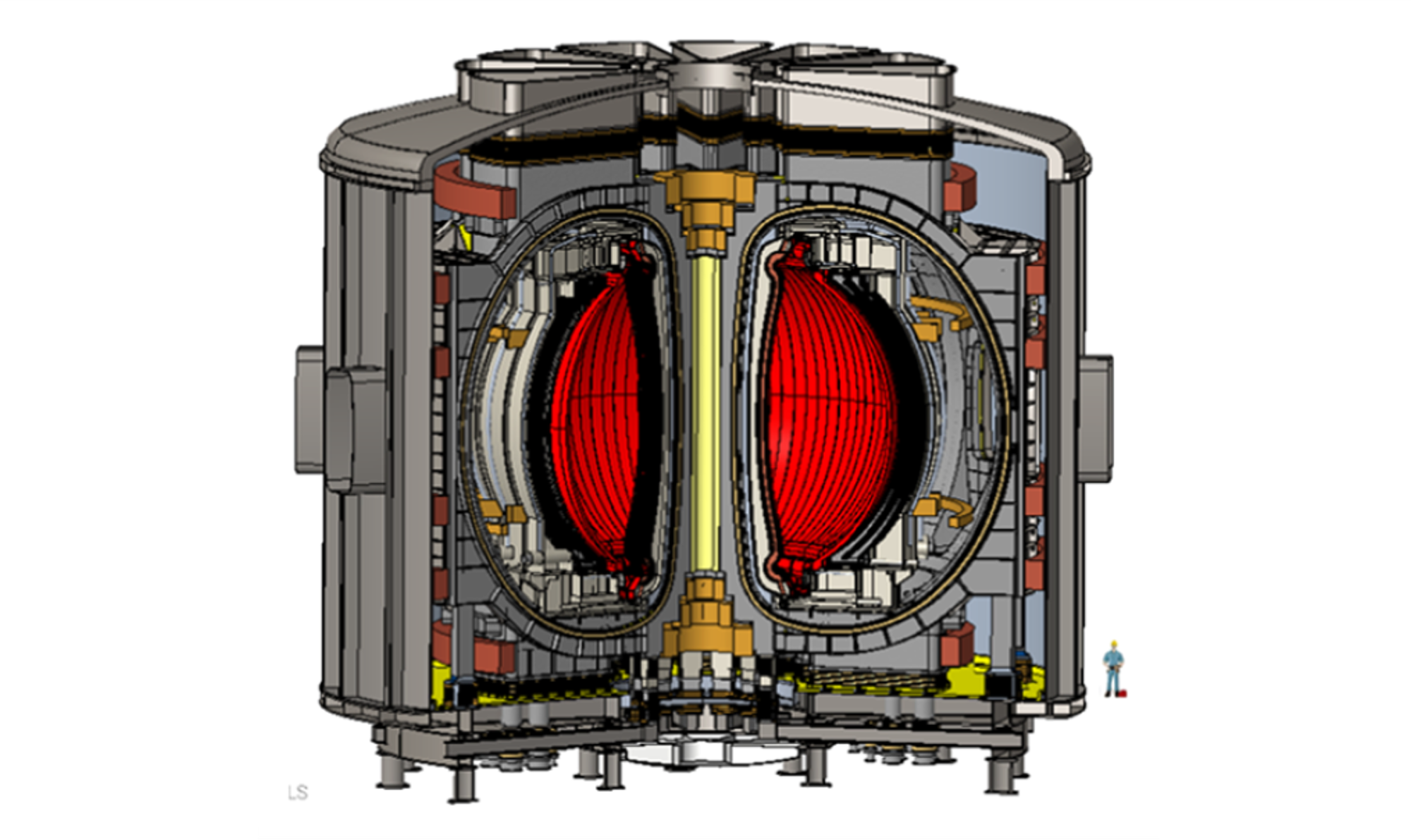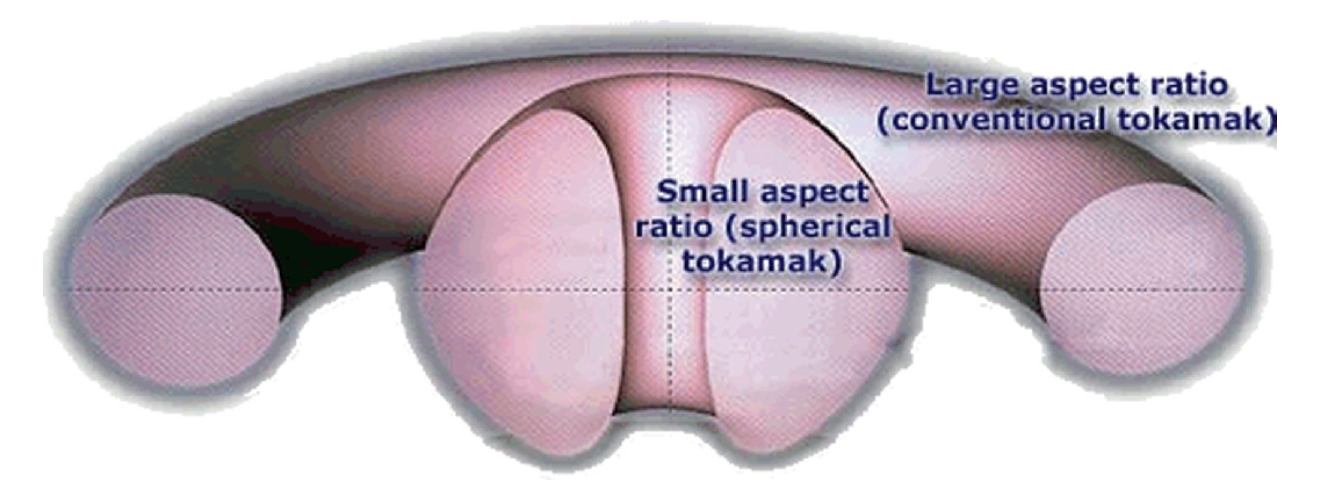Spherical Tokamaks


The Spherical Tokamak (ST) designs have advantages over a conventional tokamak (CT) because of a more compact shapes as illustrated in figure 1. This shape difference difference can be characterized as a smaller aspect ratio: A= R/r, where R is the major radius of the torus and r is the minor radius of the torus. Conventional tokamaks, like ITER, have aspect ratios of about 3 while spherical tokamaks have aspect ratio around 2. This means the plasma in a ST sits closer to the centre of the torus compared to a CT, giving a stronger magnetic field which leads to more efficient control and potentially better fusion reaction rates. The shape of the ST also contributes to improved stability of the plasma because of a more natural current flow which helps to counteract instabilities.

Figure 1. Comparison of Spherical Tokamak shape with conventional Tokamak.
The changed aspect ratio presents engineering difficulties for the ST because of the smaller central bore diameter. In a conventional tokamak, the central bore contains neutron shielding, breeder blanket, the toroidal magnet coils and the central solenoid.
A spherical tokamak design must either eliminate these elements or make them much thinner.
Spherical Tokamaks at public organizations
- STEP, a project of the United Kingdom Atomic Energy Authority (UKAEA).
Private companies with Spherical Tokamaks
Two private companies and one public organization have plans for Spherical Tokamaks:
- ENN, based in China, started in 2018, with funding $400 million in 2023.
- Tokamak Energy based in the UK, started in 2009 with funding $250 million.
Tokamak Energy (TE) has built a desktop ST prototype, ST25, which operated in 2012. Another prototype ST40, with radius 40 cm, operated in early 2022 and now is being upgraded. Despite minimal available details on designs and results Tokamak Energy advertises a pilot power plant in the early 2030s.The interest of spherical tokamaks is that the modified plasma aspect ratio gives improved plasma confinement parameters compared to that of a conventional tokamak.